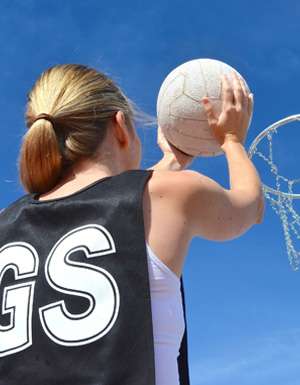Goal-based netball style found to require heavier physical exertion

A world-first study has ranked positions in elite netball according to required playing intensity.
While centre court netball players can claim the crown when it comes to physical exertion, goal based players are working a lot harder than previously thought.
Goal-based positions are uniquely demanding, with players expending a lot of energy without moving very far, through defending, guarding, jumping and passing.
That's according to the results of a research paper from Deakin University's Centre for Sport Research (CSR) supported by the Victorian Institute of Sport and honours students at Deakin's School of Exercise and Nutrition Sciences.
"Previous studies estimated that goal based positions carried just over a half of the load of the centre player, but our data - which we believe is much more accurate - shows this figure is more like 75 per cent," said lead author Dr Dan Dwyer, Senior Lecturer In Applied Exercise And Sports Science in the School of Exercise and Nutrition Sciences and a researcher with CSR.
"These players have to be very fit, and also very powerful."
Dr Dwyer said the new research could be used to help prepare specific positions for the required intensity of match-day and help ensure better team and individual performance.
"Player Load in Elite Netball: Match, Training, and Positional Comparisons," published in the "International Journal of Sports Physiology and Performance," followed the Melbourne Vixens in their premiership-winning Trans-Tasman Netball League season.
Accelerometers were attached to a special pouch at the players' waists and tracked their movements – up and down, side to side, and backwards and forwards – across all their games and one training session per week.
Dr Dwyer said this was the first time the technology had been used to track netballers at an elite level.
The data showed that the centre player had the highest intensity per match, followed closely by wing defence, then wing attack and goal attack. These players typically spent only half of an average match in a low intensity zone.
The final three positions were grouped very closely together, with the goal shooter slightly ahead of the pack, followed by goal keeper and then goal defence. This group spent about 70 per cent of their time in the low intensity zone.
The research found no difference in playing intensity in matches that were closely fought compared to larger margins, or in matches played in Australia compared to those where players had to travel to New Zealand.
"These were two areas players were particularly interested in as they had the perception that they worked a lot harder in close matches, and felt more fatigued when they played games across the Tasman," Dr Dwyer said.
"But our data showed there was no noticeable difference in average intensity levels across the team throughout the season. In each match, the results were much the same.
"We can probably attribute that fatigue in New Zealand to other factors like a slight shift in body clock, close to 100 per cent of the crowd against the visiting team, and the burden of travel."
More information: Christopher M. Young et al. Player Load in Elite Netball: Match, Training, and Positional Comparisons, International Journal of Sports Physiology and Performance (2016). DOI: 10.1123/ijspp.2015-0156




















